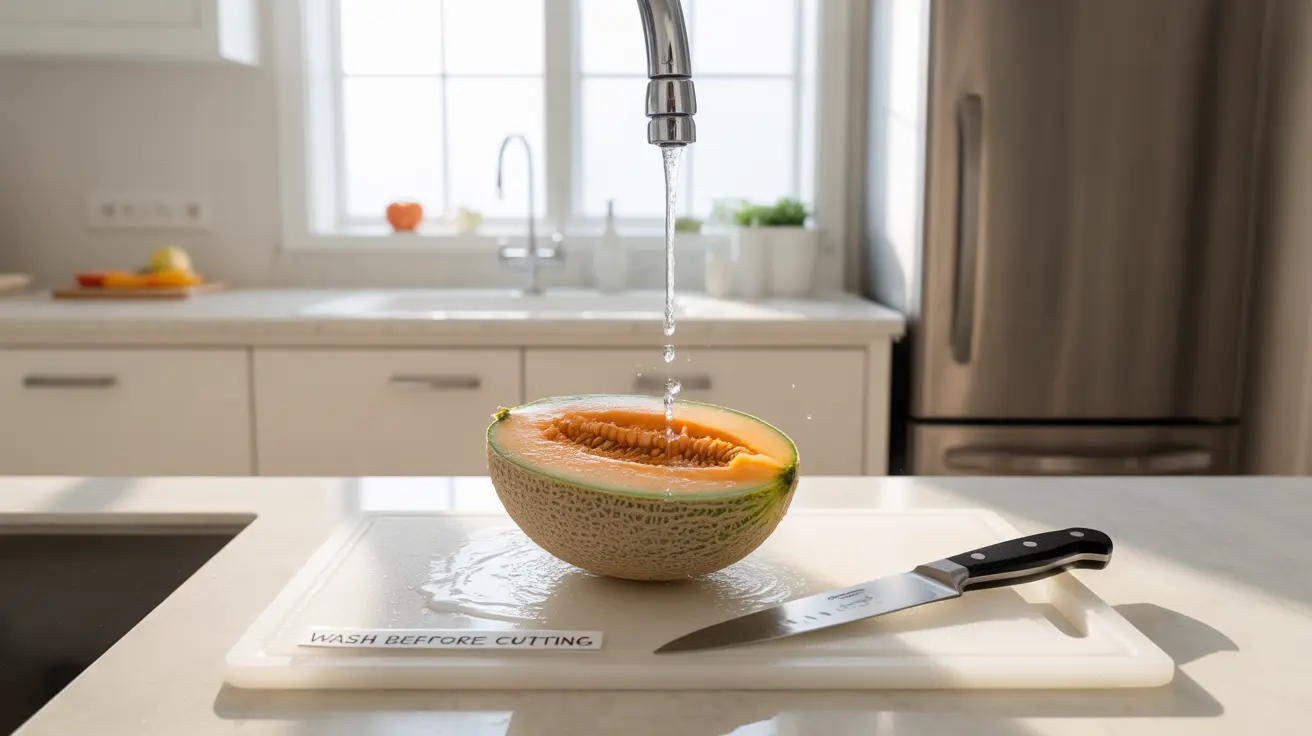The recent concern over cantaloupe-related salmonella outbreaks has raised important questions about food safety and recognizing the signs of contamination. Understanding the symptoms of eating bad cantaloupe and knowing how to respond can help protect you and your family from serious illness.
This comprehensive guide will explore the key symptoms to watch for, treatment options, and essential prevention strategies to keep you safe when enjoying this popular fruit.
Understanding Salmonella Infection from Contaminated Cantaloupe
Salmonella infection from contaminated cantaloupe typically develops within 12 to 72 hours after consumption. The bacteria can survive on the fruit's rough exterior and transfer to the flesh during cutting, making proper handling crucial for safety.
Common Symptoms to Watch For
When someone consumes contaminated cantaloupe, they may experience several distinctive symptoms:
- Severe diarrhea
- Abdominal cramps
- Fever (often 100-102°F)
- Nausea and vomiting
- Headache
- Muscle pain
These symptoms typically last between 4 to 7 days in healthy individuals. However, some cases may require medical intervention, especially if symptoms are severe or persist longer.
Treatment Approaches
Immediate Care Steps
The primary focus of treatment involves managing symptoms and preventing complications:
- Rest and hydration
- Oral rehydration solutions
- Clear fluids intake
- Bland diet when able to eat
- Over-the-counter pain relievers for fever and discomfort
When to Seek Medical Care
Certain symptoms warrant immediate medical attention:
- Bloody stools
- Severe dehydration signs
- Fever above 102°F
- Symptoms lasting more than 7 days
- Inability to keep liquids down
Prevention Strategies
Taking proper precautions can significantly reduce the risk of salmonella infection:
- Wash hands thoroughly before handling cantaloupe
- Scrub the cantaloupe's exterior with clean water
- Use clean cutting boards and knives
- Refrigerate cut cantaloupe promptly
- Discard fruit that shows signs of damage or decay
High-Risk Groups
Certain individuals should exercise extra caution with cantaloupe consumption:
- Adults over 65
- Young children under 5
- Pregnant women
- People with weakened immune systems
- Those with chronic health conditions
Frequently Asked Questions
What are the symptoms of salmonella poisoning from eating contaminated cantaloupe?
The main symptoms include severe diarrhea, abdominal cramps, fever, nausea, vomiting, and muscle aches. These typically appear within 12-72 hours after eating contaminated cantaloupe and can last for several days.
How do you treat salmonella infection caused by eating bad cantaloupe?
Treatment primarily focuses on rest, staying hydrated with clear fluids and oral rehydration solutions, and managing symptoms. Severe cases may require medical intervention and possibly antibiotics.
Can eating contaminated cantaloupe lead to severe dehydration, and how is it managed?
Yes, the combination of diarrhea and vomiting from salmonella infection can lead to severe dehydration. Management includes frequent sips of clear fluids, oral rehydration solutions, and medical attention if symptoms are severe.
What precautions should I take to prevent getting salmonella from cantaloupe at home?
Key preventive measures include thoroughly washing the cantaloupe's exterior, using clean cutting utensils, washing hands before handling, properly refrigerating cut fruit, and discarding any cantaloupe showing signs of damage or spoilage.
Are there specific groups of people more at risk of serious illness from a salmonella outbreak linked to cantaloupe?
Yes, higher-risk groups include adults over 65, young children under 5, pregnant women, people with weakened immune systems, and those with chronic health conditions. These groups should be especially vigilant about food safety and may want to avoid potentially risky foods during outbreaks.




